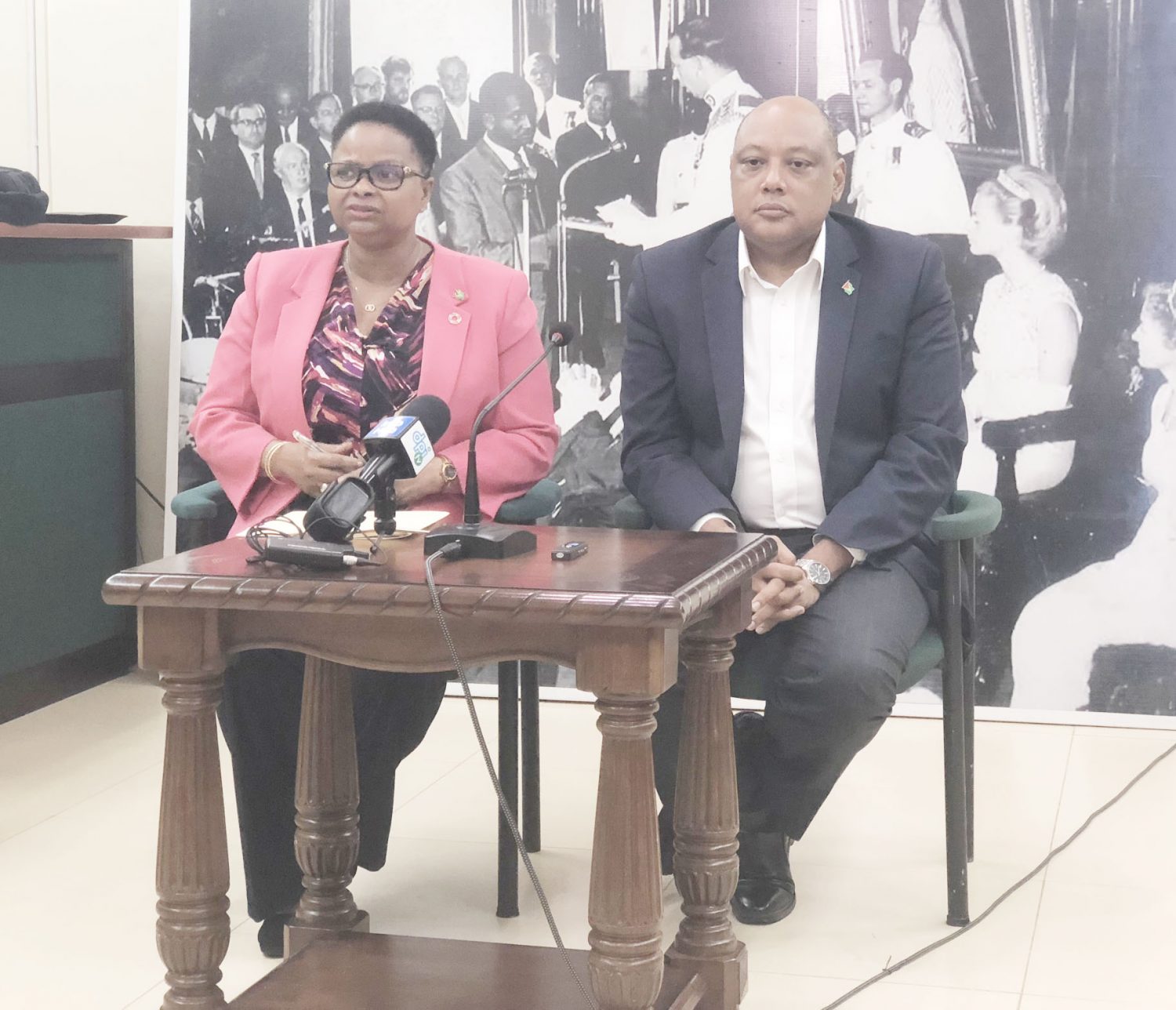The Pan-American Health Organization (PAHO) will be investigating the presence of mercury at the Guyana Geology and Mines Commission (GGMC) headquarters on Brickdam.
As government seeks to assuage concerns over the effect on workers of the emissions from the now halted burning of gold by the Guyana Gold Board (GGB) laboratory on the premises, Minister of Public Health Volda Lawrence and Minister of Natural Resources Raphael Trotman told a press conference yesterday afternoon at the Ministry of Presidency that PAHO had been invited to aid as various agencies are being consulted on the situation.
Lawrence said a meeting was convened yesterday between the Public Health Ministry, which was represented by the Chief Medical Officer (CMO), the Deputy Chief Medical Officer, the Director of Medical and Professional Service of the Georgetown Public Hospital (GPH), GPH CEO Retd Brigadier George Lewis, and the Natural Resources Ministry and the PAHO/WHO [World Health Organization] representatives.
“This meeting was called with regards to the mercury issue emanating from the GGMC and the GGB staff, but more particularly due to the issues that surround this problem,” Lawrence said, while noting speculation in the press about a former member of staff dying from the exposure of mercury
Emphasising the need to collaborate with sister agencies to ensure that guidance on the issue can be provided as well as the technical skills that are needed for the investigation and solutions, Lawrence said PAHO had been invited to bring two teams into the country to assist. She explained that the first team, which is set to arrive in the country within a few days, will ascertain the mercury levels in the GGMC compound and to pronounce on the findings by local bodies.
The second team, which will arrive sometime after the first, will look at various aspects of dealing with mercury, such as the protocols and standards and will work along with the GGMC and the GGB to ensure that all the necessary protocols and standards are in place.
Lawrence also noted that they will be looking at the database of medical records for the current employees and past workers to be able to determine “whether there is some pattern that can emerge from using various tools, to whether over the years what were the levels workers were exposed to and whether it was above the norm.”
The results will be reviewed to ensure that operations conform to the international framework and standards.
Trotman also pointed out that the CMO explained in the meeting that the issue can date back to more than a decade and reference points were made to periods during 2005 and 2006.
“I believe today’s meeting will lead to a better management of the issue and ultimately we wish to restore confidence in both the workers and the public that this issue is being addressed,” Trotman said, while stating that he is pleading for the support of the miners since it is not the government or the GGMC or GGB that use mercury, but the miners.
Trotman went on to emphasise that no expense or effort will be spared to ensure the wellbeing of every worker and everyone that comes into contact with the chemical, including persons from the interior regions that might unknowingly be affected. He also said that there is a need for the GPHC and other hospitals around the country to develop methods and protocols to deal with the issue.
The government and the GGMC and GGB by extension will be covering the costs for the PAHO visits.
When asked whether there is any indication that present protocols might have been breached, resulting in the current situation, Trotman said at some point in time “we may have not met or surpassed the standards and this gives us a chance to review all the systems and protocols and to recalibrate them.”
Since the beginning of the year, four GGMC workers – Dwayne De Jonge, Leroy Greene, Latchman Chiti and Clement Proffitt – have passed away. Proffitt’s autopsy revealed that he had died from tuberculosis.
When questioned on whether additional examinations, including a toxicology report, will be done to ascertain whether mercury was a major factor in the deaths of the men, Lawrence explained that the Public Health Board that is chaired by the CMO will be gathering information from the pathologist to do a second review. With reference to a toxicology report, she noted that the board has not provided an outline of its approach. “I am quite certain that when we issue our press statement that we will have a section that will deal with that,” she, however, added.
Despite Guyana signing on to the Minamata Convention to reduce the use of mercury recently, no headway has been made towards realising the goal and Trotman related that the current issue shows that there is a need to reduce the use of mercury.
The Guyana Civil Servants and General Workers’ Union, which represents GGMC workers, also stated last week that it was seeking international assistance to ascertain whether the GGMC was properly cleaned and is safe for workers to return to the premises.






